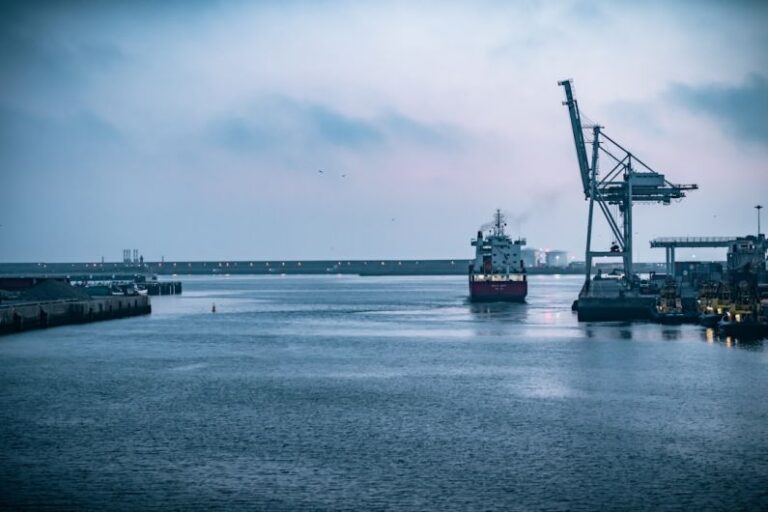The Challenges of Cross-border E-commerce Logistics
As the world becomes increasingly interconnected, cross-border e-commerce has experienced significant growth in recent years. Consumers now have access to a vast array of products from all over the globe at the click of a button. While this presents immense opportunities for businesses to expand their reach, it also brings about a new set of challenges, particularly in the realm of logistics.
Logistics Complexity in Cross-border E-commerce
One of the primary challenges faced in cross-border e-commerce logistics is the complexity of the supply chain. When goods need to travel across borders, they are subjected to various regulations, customs procedures, and transportation networks that can differ significantly from one country to another. Navigating these complexities requires a high level of coordination and expertise to ensure that products reach their destination in a timely and cost-effective manner.
Customs and Regulations
One of the biggest hurdles in cross-border e-commerce logistics is dealing with customs and regulations. Each country has its own set of rules governing the import and export of goods, including tariffs, duties, and restrictions on certain products. Ensuring compliance with these regulations is essential to avoid delays, fines, or even the seizure of goods. This often requires businesses to partner with experienced customs brokers or logistics providers who have a deep understanding of international trade laws.
Transportation and Shipping
Another challenge in cross-border e-commerce logistics is finding reliable and cost-effective transportation solutions. Shipping goods internationally can be expensive, and choosing the right shipping method is crucial to balancing cost and delivery time. Factors such as distance, weight, and the nature of the products being shipped all play a role in determining the most suitable mode of transportation, whether it be air, sea, or land. Additionally, tracking shipments across borders can be more challenging due to different tracking systems and languages used by various logistics providers.
Inventory Management
Effective inventory management is essential in cross-border e-commerce to ensure that products are available when customers place an order. Managing inventory across different countries can be complex, as demand patterns, lead times, and supply chain constraints may vary. Businesses need to strike a balance between stocking enough inventory to meet demand without overstocking and tying up capital. Utilizing advanced inventory management systems and forecasting tools can help businesses optimize their inventory levels and reduce the risk of stockouts or excess inventory.
Last-Mile Delivery
The final leg of the delivery process, known as the last-mile delivery, is often the most challenging in cross-border e-commerce logistics. Delivering goods to customers’ doorsteps in a timely and cost-effective manner requires efficient route planning, coordination with local delivery partners, and the ability to navigate complex urban environments. Factors such as traffic congestion, address accuracy, and local customs and regulations can all impact the success of last-mile delivery. Businesses need to invest in innovative solutions such as drone delivery, locker systems, or crowdsourced delivery to overcome these challenges.
Technology and Data Integration
In an era of digital transformation, technology plays a crucial role in overcoming the challenges of cross-border e-commerce logistics. Implementing robust e-commerce platforms, integrated order management systems, and data analytics tools can help businesses streamline their operations, improve visibility across the supply chain, and enhance the overall customer experience. Leveraging technologies such as artificial intelligence, blockchain, and IoT can provide real-time insights into inventory levels, shipment status, and customer preferences, enabling businesses to make data-driven decisions and optimize their logistics processes.
Innovative Solutions and Collaborations
To address the challenges of cross-border e-commerce logistics effectively, businesses need to adopt innovative solutions and collaborate with partners across the supply chain. This may involve forming strategic partnerships with logistics providers, investing in warehousing and fulfillment centers in key markets, or leveraging shared transportation networks to reduce costs and improve efficiency. By embracing a collaborative and forward-thinking approach, businesses can overcome the complexities of cross-border logistics and capitalize on the opportunities presented by the global e-commerce market.
In conclusion, the challenges of cross-border e-commerce logistics are multifaceted and require careful planning, coordination, and innovative solutions to overcome. By addressing issues such as customs and regulations, transportation and shipping, inventory management, last-mile delivery, technology integration, and collaboration, businesses can streamline their operations and deliver a seamless shopping experience to customers worldwide. Embracing the complexities of cross-border e-commerce logistics as opportunities for growth and expansion can set businesses apart in an increasingly competitive global marketplace.






